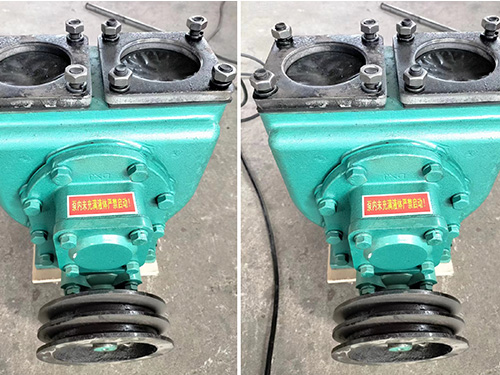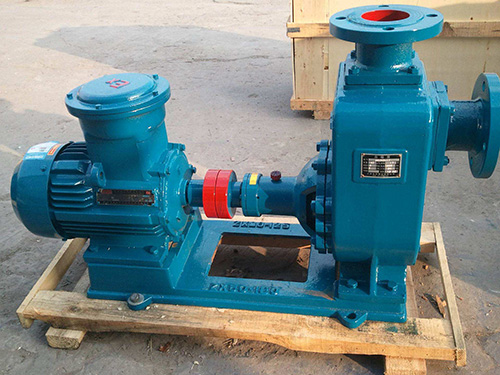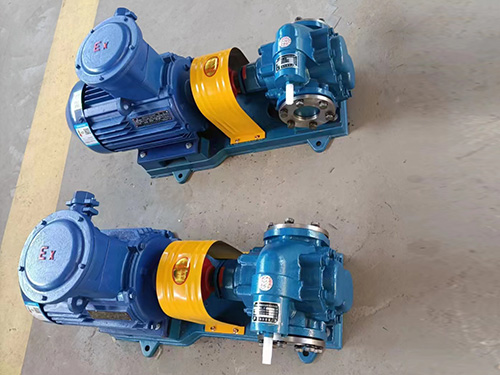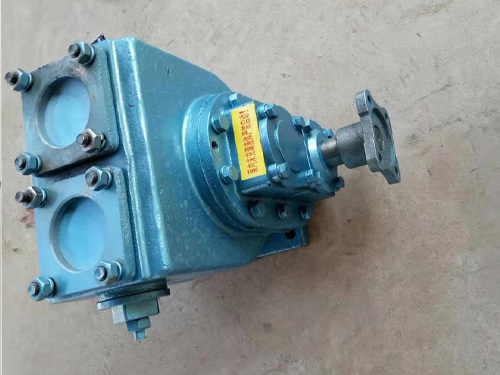介质粘稠度和齿轮泵转速的关系
2025-08-27 10:38:37
The relationship between the viscosity of the medium and the speed of the gear pump is one of the most critical considerations in the selection and application of gear pumps, which directly affects the performance, efficiency, and service life of the pump.
Overall, their relationship is interdependent and needs to be matched. It cannot be simply said to be positively or negatively correlated, but needs to be discussed on a case by case basis.
Here is a detailed explanation:
1、 Core Relationship: The Influence of Viscosity on Pump Performance
The viscosity of the medium will significantly affect the operation of the gear pump through the following aspects:
1. Volumetric Efficiency
Low viscosity fluids (such as water): The fluid is more likely to leak back into the suction end through the gaps (internal gaps) between the gear end face, tooth tip, and pump casing. This internal leakage will result in the actual flow rate of the pump (outlet)
If the flow rate is lower than the theoretical flow rate, the volumetric efficiency will decrease.
High viscosity fluids (such as engine oil and asphalt): The fluid is more viscous, with greater internal leakage resistance and reduced leakage volume. Therefore, at the same rotational speed, gear pumps have higher volumetric efficiency when transporting high viscosity fluids
International traffic is closer to theoretical traffic.
2. Mechanical Efficiency&Input Power
Low viscosity fluid: The force required for gear agitation and shearing of the fluid is relatively small, resulting in lower operating torque and power consumption of the pump, and higher mechanical efficiency.
High viscosity fluid: Gears require greater force to shear and transport viscous media, resulting in a sharp increase in friction losses. This manifests as the need for greater driving torque and high input power, mechanical
Efficiency decreases. Motors are more prone to overload.
3. Oil absorption capacity (cavitation - cavitation phenomenon)
High viscosity fluid: Poor fluidity, resulting in greater flow resistance (pressure drop) at the inlet. If the speed is too high, the expansion rate of the pump chamber volume is too fast, and the viscous medium cannot be filled in time
The interdental space can cause local pressure inside the pump chamber to be too low, resulting in cavitation. Cavitation can generate noise, vibration, and severely damage the gears and the inner surface of the pump casing.
Therefore, for high viscosity media, the rotational speed must be reduced to give the fluid enough time to flow into the pump chamber and avoid cavitation.
4. Lubrication and wear
Gear pumps rely on the medium being transported to lubricate the meshing area of gears and bearings. High viscosity media typically form better lubricating oil films and reduce wear.
But if it is extremely high temperature or extremely high viscosity, poor fluidity may actually lead to insufficient lubrication.
2、 The regulating effect of rotational speed
The rotational speed (RPM) directly determines the theoretical flow rate (Q_theological ∝ RPM) of the pump and the linear velocity of the gear.
For low viscosity media, internal leakage is the main issue. In order to increase the actual flow rate, it is usually necessary to increase the rotational speed to compensate for the losses caused by internal leakage.
For high viscosity media, frictional power loss and cavitation risk are the main issues. For safe operation, the speed must be reduced.
3、 Summary and Practical Guide
The relationship can be summarized in the following table for ease of understanding:
The recommended speed for medium viscosity is mainly due to the main reasons and risks
Low viscosity (such as water, solvents, light oil) compensates for internal leakage at higher speeds, improving volumetric efficiency and actual flow rate. Excessive internal leakage leads to insufficient flow; Poor lubricity of the medium may exacerbate wear.
Medium viscosity (such as hydraulic oil, engine oil) design rated speed pumps are typically designed and tested within this viscosity range for optimal performance. No significant risk, operate in the optimal operating condition zone.
High viscosity (such as gear oil, asphalt, resin, syrup) reduces flow resistance and avoids cavitation at lower speeds; Control torque and power to prevent motor overload. Excessive rotational speed can cause cavitation and electrical damage
Machine overload and sharp increase in energy consumption.
Important Tips and Best Practices:
1. Follow the pump factory curve: Each gear pump has its viscosity speed performance curve. This is the fundamental basis for selection. The manufacturer will indicate the recommended working viscosity range and corresponding maximum/minimum for the gear pump
Speed.
2. The inverse relationship between rotational speed and viscosity: As an empirical rule, when the viscosity of the medium doubles, the rotational speed of the pump usually needs to be reduced by about half. This is only a rough estimate, specific curves must be consulted.
3. Heating to reduce viscosity: For media with extremely high viscosity (such as asphalt and heavy oil), the common industrial practice is to first heat the medium and pump body to reduce their viscosity, and then start the pump. This way, we can
Efficient and safe transportation can be achieved at a reasonable rotational speed.
4. Motor power matching: When pumping high viscosity media, due to the huge torque required, a motor with sufficient power must be equipped, otherwise it cannot start or may cause the motor to burn out.
5. Precautions for start-up: Before starting a pump that may transport cold high viscosity media, it is necessary to manually turn the gear to confirm that it can be rotated, otherwise the risk of forcibly starting is extremely high.
Conclusion: The viscosity of the medium and the speed of the gear pump are two strongly correlated parameters. Viscosity is the independent variable, and rotational speed is the dependent variable. It needs to be based on the actual viscosity of the medium, especially at the starting and operating temperatures
Select and limit the pump speed to ensure that the pump can operate under reliable conditions. Never use the same high speed for all media.

The YHCB high flow pump has the characteristics of large flow rate, high head, small settli...

The CYZ centrifugal pump adopts an axial return liquid pump body structure, which is compos...

Copper gear pump (KCB type) is suitable for conveying lubricating oil or other liquids with...

The car mounted circular arc gear pump can be installed on the car and driven by the output...



